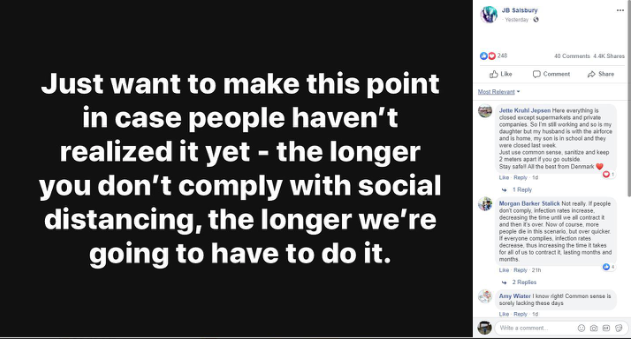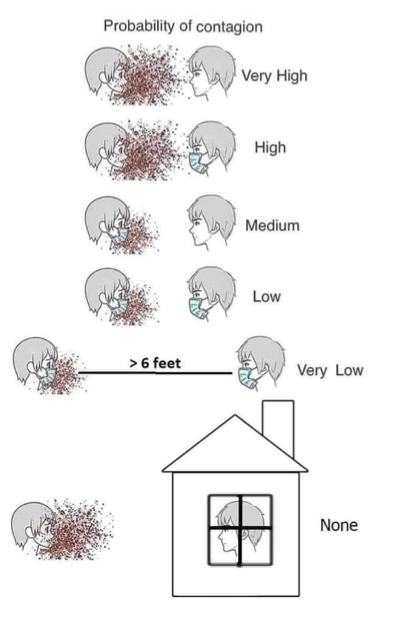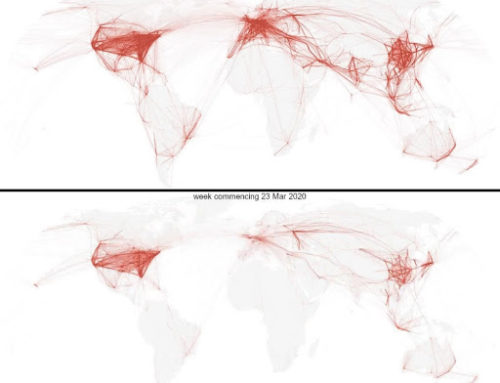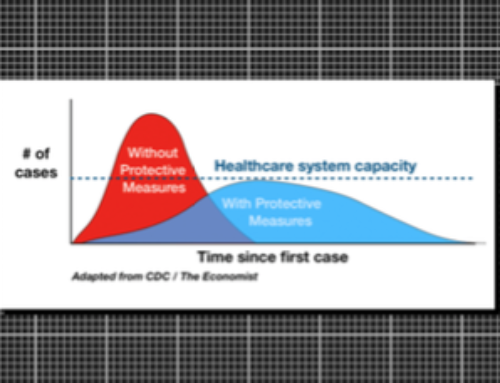The howling begins at 8 pm. Starting in April, residents of the Denver, Colorado metro area began marking the time when people stopped what they were doing in their homes and howled, residents’ voices echoing from building to building in an polyphony that was meant to express audible support for healthcare and frontline workers in the face of a global pandemic. Less lyrical than singing from rooftops in Italy, or cacophonous than cheering in New York City, or consoling than expressions of support to strangers across balconies in Wuhan, howling might seem like a regionally suited expression. After all, Colorado celebrates its identity as an outdoorsy state. Yet I suggest that the primal pleasure of howling is not simply a regional style. Rather, it is a particular form of auditory connection that indexes isolation and alienation when sociality itself is being reshaped by the demands of a highly infectious virus. In a moment when many Americans are connecting with colleagues and family via videoconferencing, why do they experience being at home as exhausting, or feel trapped? Why isn’t seeing people enough? And why might howling feel good?
“The longer it takes to comply” and “Homes are safer than masks”
Social distancing was not a term most Americans had heard of before January 2020. Though the first Covid-19 cases had already occurred in the United States by early March, and the situation in Wuhan was on everyone’s mind, it still somehow seemed as if the virus could be relatively contained in China. For many of us, the lockdown in Milan on March 8th marked a moment when Covid-19 went from being remote to a viable threat. It was no longer a virus controllable by the Chinese government—if it ever could have been that at all—but had now travelled around the world to Europe. We watched accounts of hospitals in Italy being overwhelmed as social dissolution and fear spread. Italians took to the internet in a plea, not for help, but to warn others so as to avert this same outcome elsewhere (Melandri 2020). In this context, social distancing was taken up in the USA as a measure not just to keep people safe, but to avoid the outcome presented by Italy and China.
As a means of capturing the sentiment of anticipation, I look to a commonly circulated meme image from the early days of social distancing in the United States: “The longer it takes to comply, the longer we will have to do it:”

Image 1
This and other memes circulated frequently in response to the news from Italy, China, and South Korea in February and March. Two things stand out. First is the demand for a shared agreement to follow social distancing. Second is the anticipated outcome that a pandemic might be avoided if there was collective commitment to isolation. While the value of individual choice and freedom to act is a central orienting principle in the USA, the temporary arrest of those freedoms was always paired with the assurance that they would be just that: temporary.
Affective forecasting attempts to anticipate the emotional outcomes of specific behavior in an uncertain world. Psychological experiments have demonstrated that humans individually often fail to assess the outcome of anticipated experiences leading to disappointment (Wilson and Gilbert 2005). However, within anthropology this question of affective forecasting takes on a social dimension (Stafford 2015). Both the goals and expected outcomes became part of a broader landscape of interpersonal affect. Calls for social distancing on social media have rested on an anticipated return to a normal and presumably good life.
What values drive the expectation of future happiness if social distancing is framed as the curtailment of individual freedoms, rather than collective attunement and compassion? Might this partially explain why we are beginning to see resistance to stay-at-home orders in the USA expressed as individual defiance of state overreach? To address this, I turn to the site to which we have been asked to return in this moment: the home. Accompanying the calls for social distance was the heavy use of #stayhome and #staysafe. Indexing a mutual understanding, the use of hashtags creates commonalities between different people and different posts (Bonilla and Rosa 2015). Pairing these concepts, however, linked the home with safety, for the self and for others. Staying at home positions the home as a refuge against the virus, a middle-class equivalent to facemasks, ensuring the safety of the occupant, so long as they remain separated from the public.

Image 2
What “counts” as family and home has particular roots in Victorian, capitalist divisions of gendered labor, especially around key anxieties about the uncontrollable nature of the working world (Collier, Rosaldo, and Yanigasako 1997). The need for a safe haven of nurturing away from the alienating world of labor has also been central to persistence of a public/private dichotomy (Masco 2008). This has shaped assumptions about family structures, social organization, and moral discourse to the point that even scholars critical of normative claims of Euro-American domesticity continue to reproduce the expectations that family life is safe and secure. The home becomes emblematic of that domestic tranquility even as it occludes the necessary labors to produce it (Stoler 2004; Hochschild 1989). Thus, in the face of a state’s lack of preparation to protect its citizens, the ideals of the home as a sanctuary were predictably deployed to keep people isolated.Being social while distant
If the home is ostensibly a sanctuary that facilitates the freedom of commodified labor, then why does being at, indeed working from, home feel so tiring and isolating? Medical practitioners have become increasingly concerned with the degree of isolation in this era of late-industrial neoliberalism (Holt-Lundstad 2017). Loneliness is now a medical risk factor on par with heart disease or smoking. In tandem with precarious labor conditions, we now realize that precarity has social costs (Allison 2012; Berlant 2010) Yet this new weight of loneliness is best understood not in the absence of people, but in isolation from familiar ways of sociality (Gagné 2019, 30). This distinction is key because it is not due to a lack of communication that this loneliness persists in the time of social distancing. Instead, it is how unfamiliar our new forms of communication are. Zoom, a digital communication service for camera-aided conference calling, saw a 2,000 percent increase in daily conference calls from 10 million in December 2019 to 200 million in March of 2020 (Iqbal 2020). With a massive increase in video conferencing, emotional calls, and “zoom socials,” the home has become a place of constant observation. The idea that a workspace, a social call, and an intimate meeting with a loved one all happen in the same space challenges understandings of how spaces are ideally separated (Jiang 2020). Even as videos reframe our sense of space and privacy, they are also panoptic. Being observed and witnessing oneself being observed produces unsurprising exhaustion (Lorenzini 2018). For some, this experience is a new challenge in a familiar endeavor of curating the self (Davenport 2020), while others find this all-together new and painful (Wright 2020).
Paradoxically, the logics that positioned the home as a safe space in the first place produced the collapse of the home sphere with both work and the public sphere. By shifting to the home, two important social spheres are collapsed, demanding new forms of emotional labor of occupants even as it complicates the idea that what is being done is not work. Asked instead to prioritize the safety of others, unseen and (hopefully) unmet, the labor is done in a vacuum and we are instead asked to witness the unfolding of the virus, trying to discover where our contributions may appear.
Witness to Unseen Tragedy
For as much as affective forecasting provided a language for why social distancing would end the pandemic prematurely, crisis in the USA has not been averted, and social distancing remains the primary solution to the crisis even as states look to reopen in the face of economic downturn. Rather than avoiding what occurred in Italy, the United States infection rate continued to grow and at the time of this writing, the confirmed death toll has reached over 80,000, a number that will no doubt be far less than the life we know at the time this is read (Horn 2020). Social distancing shifted from an act of preventing an outbreak to the means of caring for others and ensuring one’s own safety, while attempting to reconcile the deaths of so many people that aren’t seen. While analogies to war-time casualties and environmental disasters attempt to fix the number of deaths into something familiar, the ambiguous and largely anonymous nature of these deaths requires a challenge of caring abstractly.
“To care anonymously also requires being able to care intransitively. There is no direct object of care, except for the class of a-nonymous individuals” (Stevenson 2012; 601). The challenge is to abstract the notion of care and danger away from individuals one may know to the larger collective idea of the public. This is not only a strategy that requires imagining oneself as a subject but as a responsible and caring one. Yet, the act of caring comes in the form of avoidance, removal and limiting interaction. It is important to recognize that simply because something is remote does not prevent it from having an emotional impact. Behar (1996) describes the unique pain of being close to, but removed from the suffering of those one cares for. In her critique of the discipline of anthropology, she refers to field work as a unique form of witnessing, to note down the experiences of others with the right degree of both emotional connection and clinical dispassion. In a similar respect, the labor for those who are not directly working to combat Covid-19 seems to be one of witness to the events, be it tracking the rates of infection (Storz and Wynfield 2020), working to reveal those experiences that are hidden (Edmiston 2020), or try to make sense of these experiences through humor (Paing 2020).
In the space of uncertainty, we wait. It is 8 pm and one lone voice gives a howl somewhere outside my window, calling for a response, calling out while we wait.
References:
Allison, Anne. 2012. “Ordinary Refugees: Social Precarity and Soul in 21st Century Japan.” Anthropological Quarterly 85 (2): 345–70.
Behar, Ruth. 1996. The Vulnerable Observer: Anthropology That Breaks Your Heart. Boston: Beacon Press.
Berlant, Lauren. 2010. Cruel Optimism. Durham, NC: Duke University Press.
Bonilla, Yarimar and Jonathan Rosa. 2015. “#Ferguson: Digital protest, Hashtag ethnography, and the racial politics of social media in the United States.” American Ethnologist 42 (1): 4-17.
Collier, Jane, Michelle Z. Rosaldo, Sylvia Yanagisako. 1997. “Is There a Family? New Anthropological Views.” In The Gender Sexuality Reader, Lancaster R. snd M. di Leonardo, eds. Routledge, pp. 71-81.
Davenport, Gillian. 2020. “Good Vibes: The Complex Work of Social Media Influencers in a Pandemic.” In “Pandemic Diaries: Affect and Crisis,” Carla Jones, ed., American Ethnologist website. May 20 2020, https://americanethnologist.org/features/pandemic-diaries/pandemic-diaries-affect-and-crisis/good-vibes-the-complex-work-of-social-media-influencers-in-a-pandemic
Edmiston, Paige. 2020. “Cultivating Resemblance: Moving Strangers on the Internet to Care.” In “Pandemic Diaries: Affect and Crisis,” Carla Jones, ed., American Ethnologist website. May 202 2020, https://americanethnologist.org/features/pandemic-diaries/pandemic-diaries-affect-and-crisis/cultivating-resemblance-moving-strangers-on-the-internet-to-care
Gagné, Karine. 2018. Caring for Glaciers: Land, Animals and Humanity in the Himalayas. Seattle: University of Washington Press.
Hochschild, Arlie. 1989. “The Economy of Gratitude.” In The Sociology of Emotions: Original Essays and Research, David D. Franks and E. Doyle McCarthy, eds. Greenwich, CT: JAI Press.
Holt-Lundstad, Julianne. 2017. “The Potential Public Health Relevance of Social Isolation and Loneliness: Prevalence, Epidemiology and Risk Factors.” Public Policy and Aging Report 27 (4): 127-130.
Horn, Austin. 2020. “U.S. Coronavirus Death Toll Passes 50,000.” NPR. April 24, 2020.
https://www.npr.org/sections/coronavirus-live-updates/2020/04/24/844039508/u-s-coronavirus-death-toll-passes-50-000?utm_medium=RSS&utm_campaign=nprblogscoronavirusliveupdates.
Iqbal, Mansoor. 2020. “Zoom Revenue and Usage Statistics” Business of Apps. May 13, 2020. https://www.businessofapps.com/data/zoom-statistics/
Jiang, Manyu. 2020. “Video chat is helping us stay employed and connected. But what makes it so tiring – and how can we reduce ‘Zoom fatigue’?” BBC. April 22, 2020. https://www.bbc.com/worklife/article/20200421-why-zoom-video-chats-are-so-exhausting
Lorenzini, Daniele. 2018. “Governmentality, Subjectivity, and the Neoliberal Form of Life.” Journal of Cultural Research 22 (2): 154-166.
Masco, Joseph. 2008. “‘Survival Is Your Business’: Engineering Ruins and Affect in Nuclear America.” Cultural Anthropology 23 (2): 361–98.
Melandri, Francesca. 2020. “A Letter to the UK from Italy: This is What We Know About Your Future.” The Guardian, March 27, 2020. https://www.theguardian.com/world/2020/mar/27/a-letter-to-the-uk-from-italy-this-is-what-we-know-about-your-future
Paing, Chu May. 2020. “Viral Satire as Public Feeling in Myanmar.” In” Pandemic Diaries: Affect and Crisis,” Carla Jones, ed., American Ethnologist website. May 20 2020 https://americanethnologist.org/features/pandemic-diaries/pandemic-diaries-affect-and-crisis/viral-satire-as-public-feeling-in-myanmar
Stafford, Charles. 2015. “Being Careful What You Wish for: The Case of Happiness in China.” HAU: Journal of Ethnographic Theory 5 (3): 25–43.
Stevenson, Lisa. 2012. “The Psychic Life of Biopolitics: Survival, Cooperation, and Inuit Community.” American Ethnologist 39 (3): 592–613.
Stoler, Ann. 2004. “Affective States.” In A Companion to Anthropology of Politics, David Nugent and Joan Vincent, eds., Oxford: Wiley Blackwell.
Storz, Lauren and Anna Wynfield. 2020. “How to Sense a Pandemic: Curves, Models and the Affective Allure of Flattening.” In “Pandemic Diaries: Affect and Crisis,” Carla Jones, ed., American Ethnologist website. May 20 2020 https://americanethnologist.org/features/pandemic-diaries/pandemic-diaries-affect-and-crisis/how-to-sense-a-pandemic-curves-models-and-the-affective-allure-of-flattening
Wilson, Timothy D. and Daniel T. Gilbert. 2005. “Affective Forecasting: knowing what to want.” Current Directions in Psychological Science 14 (3): 131-34.
Wright, Robin. 2020. “How Loneliness From Coronavirus Isolation Takes Its Own Toll.” The New Yorker. March 23, 2020. https://www.newyorker.com/news/our-columnists/how-loneliness-from-coronavirus-isolation-takes-its-own-toll.
Cite as: Drolet, Anden. 2020. “Seeing Still Isn’t Believing: Social Distancing and the Labor of Witnessing.” In “Pandemic Diaries: Affect and Crisis,” Carla Jones, ed., American Ethnologist website, May 20 2020, [https://americanethnologist.org/panel/pages/features/pandemic-diaries/pandemic-diaries-affect-and-crisis/seeing-still-isnt-believing-social-distancing-and-the-labor-of-witnessing/edit]
Anden Drolet is a PhD student in cultural anthropology at the University of Colorado. His research analyzes cultural constructions of well-being in Bhutanese development policy.




